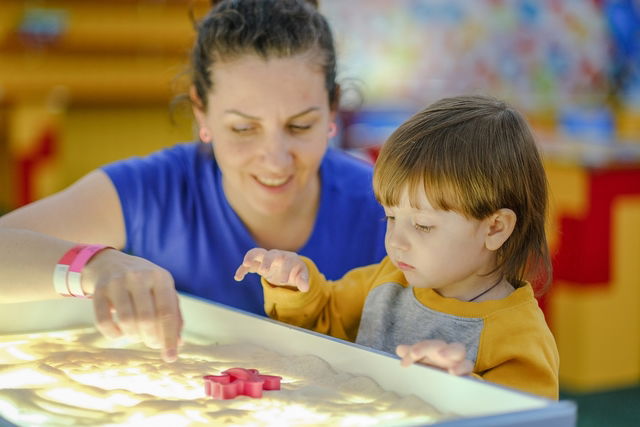Signs of the autism spectrum in babies can be noted after 12 months. Common symptoms include difficulty communicating and playing with other children. Although babies with autism will not have any visible, physical changes, they often do not emit sounds and do not respond when spoken to.
Autism is a disorder that is characterized by changes to communication, socialization and behaviors. Diagnosis can also be confirmed when the child is able to speak and show other signs.
If you notice any changes, you should consult your pediatrician so that these symptoms can be assessed and other ways to stimulate the child can be suggested. O

Babies who are noted to be along the autism spectrum will often present with signs like:
1. Do not react to sounds
Babies are able to hear and respond to stimulus and have had this ability since being in-utero. When they are born, it is normal for babies to react to a very loud sound, like when an object falls on the floor. It is also normal for babies to turn their head toward music or toward a toy emitting noise. Babies with autism, however, do not show any interest to sound and do not react to noise. This can leave parents concerned and prompt a need for hearing tests.
Hearing tests can be ordered to confirm whether the ability to hear is compromised in any way. If hearing is within normal ranges, then the suspicion for autism can be investigated.
2. Not making noise
It is normal for babies to interact or call for attention when they wake up with moaning and small sounds. With autism, babies do not emit any sounds, even through there are no speech abnormalities. They prefer to stay quiet without interacting with those around them. Babies with autism do not usually make age-appropriate sounds like "baba", "ada" or "ohh".
Children over two years of age should be able to form small sentences, but with autism, children usually do not use more than 2 words. They prefer to point to what they want using an adult’s hand or they repeat words that are spoken to them several times.
3. Lack of facial expression
Babies can start to smile after 2 months of age. Although they do not know what a smile means, they are training these facial movements. Babies will especially smile around other adults and children. Autistic babies seem to smile less and tend to have the same facial expression. They appear as if they are not satisfied or happy, even though they may have this feeling.
4. Refusing hugs and kisses
Usually, babies like cuddles because they feel safer and more loved with hugs and kisses. In cases of autism, there appears to be a certain repulsion to cuddles. Autistic babies do not like to be held, look into some else’s eyes, and may even refuse intimate contact, even with their daily caregivers.
5. Lack of response when called
At one year of age, children should be able to respond to their name. When called, babies will turn toward the person, respond with sound, or even come toward the person. With autism, babies do not respond with sound or turn toward the person who called them. The baby will appear to ignore the caller, as if they did not hear anything.
6. Does not play with other children
In addition to not looking for other children’s company, babies on the autism spectrum actually prefer to stay far away from other children. They will avoid any proximity to other children and run away from them.
7. Repetitive body movements
One of the characteristics of autism is repetitive body movements, like hand or arm flapping, head slapping, or hitting the head on the wall. These movements can be noted after the age of one and tend to persist and intensify if left untreated.
What to do if you suspect autism
If you notice that your baby or child presents with any of these signs, you should see your pediatrician for a consult. The doctor can evaluate the signs and symptoms, and determine the need for a formal assessment by a medical team. If confirmed, treatment for autism can be initiated, and may involve the use of psychomotor therapy, speech therapy and even medication in some cases.
Generally, when autism is identified early on, it is possible to introduce therapy to the child. This can help the child to learn communication and relationship tools that can allow them to function and have a life similar to other children their age.
